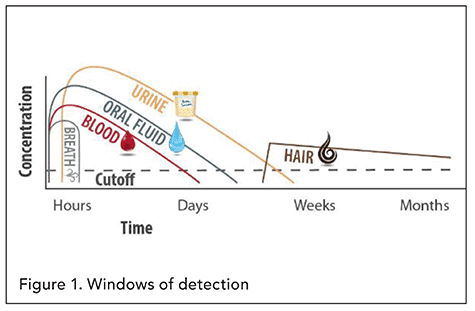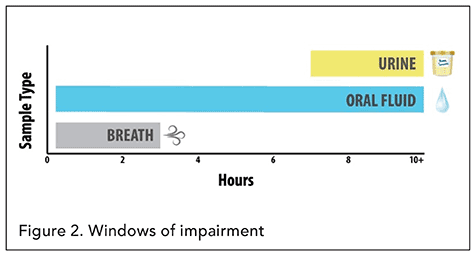Drug testing methods
What does oral fluid drug testing offer that other test specimens don’t?
Responding is Brandon Williams, senior account manager, OraSure Technologies, Kansas City, KS.
Oral fluid drug testing offers many benefits, regardless of testing scenario, workplace or other factors. Of all the accepted testing methods, oral fluid offers the easiest collection process and has a short window of detection. Unlike other specimens that detect drugs for weeks and sometimes months, oral fluid detects only drugs that have been used in the past few hours to days, eliminating the concern that a positive drug test is the result of historic use rather than recent use. Specifically in states that permit legal cannabis, recent-use detection is of greater concern for workplace safety than the broader history of use that other testing methods yield. Although there are other specimens with short windows of detection, oral fluid collections are entirely noninvasive and can be performed by nearly anyone, making them unique.
 With the rising popularity of cannabis worldwide, oral fluid’s ability to cover the entire window of impairment for THC – the active ingredient of cannabis – is essential for employers who want to know about current impairment. Unlike other testing methods that cover only a portion of the window of impairment for THC, oral fluid covers the entire 10-plus hours of impairment, meaning that THC is detectable in oral fluid for the entire generally accepted duration of its impairing effects. Oral fluid is the only test specimen that offers this benefit.
With the rising popularity of cannabis worldwide, oral fluid’s ability to cover the entire window of impairment for THC – the active ingredient of cannabis – is essential for employers who want to know about current impairment. Unlike other testing methods that cover only a portion of the window of impairment for THC, oral fluid covers the entire 10-plus hours of impairment, meaning that THC is detectable in oral fluid for the entire generally accepted duration of its impairing effects. Oral fluid is the only test specimen that offers this benefit.
Similar to urine testing, oral fluid drug testing is permitted in nearly all states and most industries, is federally endorsed, and is appropriate for use in a variety of situations. Setting up an oral fluid program that complements or replaces an existing drug testing program offers many benefits that help employers streamline their operations.
 Generally, employers who use oral fluid have reduced overall drug and alcohol testing costs, as the testing cost per sample tends to be lower than its closest counterpart: urine. Add in the fact that collections can be performed onsite – reducing hours away from work for travel and wait time, as well as streamlined collector training – and overall costs are significantly reduced while workplace efficiency is improved.
Generally, employers who use oral fluid have reduced overall drug and alcohol testing costs, as the testing cost per sample tends to be lower than its closest counterpart: urine. Add in the fact that collections can be performed onsite – reducing hours away from work for travel and wait time, as well as streamlined collector training – and overall costs are significantly reduced while workplace efficiency is improved.
Oral fluid collection combines noninvasive procedures with collection sites that are easy to set up and secure. This ensures employee privacy while also making adulteration nearly impossible. Collections can be conducted nearly anywhere without significant site preparations, providing the flexibility to complete testing in a suitable, private area in short time. Collections are completed in full view of the donor and the collector, ensuring complete transparency to all parties. The ability to cheat an oral fluid test is nearly impossible given the fully observed process, all while maintaining the integrity of the collection and the dignity of the employee.
Oral fluid offers many of the benefits of traditional testing methods, along with additional benefits, allowing employers to use a proven and effective testing method while streamlining their drug and alcohol testing processes.
Editor's note: This article represents the independent views of the author and should not be construed as a National Safety Council endorsement.
Post a comment to this article
Safety+Health welcomes comments that promote respectful dialogue. Please stay on topic. Comments that contain personal attacks, profanity or abusive language – or those aggressively promoting products or services – will be removed. We reserve the right to determine which comments violate our comment policy. (Anonymous comments are welcome; merely skip the “name” field in the comment box. An email address is required but will not be included with your comment.)

